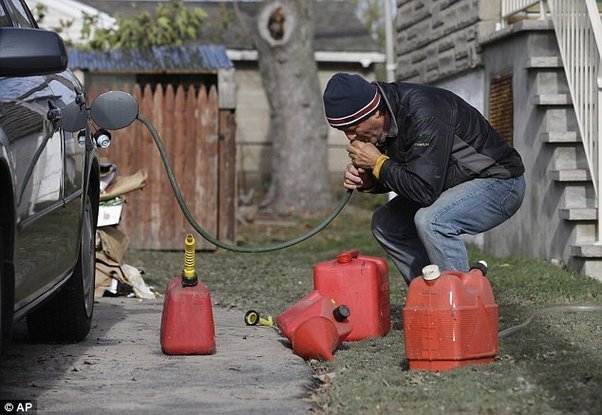Siphoning gas is a process of transferring fuel from one container to another by creating a vacuum. It is a handy technique that can be used in a variety of situations, such as transferring gas from a vehicle to a gas can or draining a gas tank. However, it can also be a dangerous process if not done correctly. In this blog post, we will discuss how to siphon gas safely and effectively.
Materials Needed:
- Gas can
- Hose or tubing (preferably clear)
- Funnel (optional)
- Safety glasses (recommended)
- Gloves (recommended)
Step 1: Determine the location of the gas tank
Before you begin, you need to locate the gas tank from which you want to siphon the gas. In most vehicles, the gas tank is located under the car, near the rear wheels. If you are unsure where the gas tank is, consult your owner’s manual or do some research online. Make sure you are working in a well-ventilated area to avoid inhaling any gas fumes.
Step 2: Prepare the gas can
Get a gas can that is the appropriate size for the amount of gas you want to siphon. You can also use a funnel to make pouring the gas into the can easier. Before you begin siphoning, make sure the gas can is clean and free of any debris. You don’t want any dirt or other contaminants getting into your gas tank.
Step 3: Prepare the hose or tubing
Next, you need to prepare the hose or tubing that you will use to siphon the gas. Ideally, you want to use a clear hose or tubing so that you can see when the gas is flowing through it. Cut the hose or tubing to a length that is long enough to reach from the gas tank to the gas can. Make sure the diameter of the hose or tubing is small enough to fit into the gas tank’s opening.
Step 4: Insert the hose or tubing into the gas tank
Insert the hose or tubing into the gas tank through the opening. You may need to use a funnel to guide the hose or tubing into the opening. Make sure the hose or tubing is securely in place, and there are no kinks or bends in it that could impede the flow of gas.
Step 5: Create a vacuum
To siphon the gas, you need to create a vacuum. There are a few different ways to do this:
- Suck on the hose or tubing: This is the most straightforward method, but it can be dangerous. You should never suck on a hose or tubing that is connected to a gas tank, as you could inhale gasoline or fumes. If you must use this method, make sure to wear safety glasses and gloves, and spit out any gas that gets into your mouth.
- Use a pump: You can also use a hand pump or an electric pump to create a vacuum. Simply attach the pump to the end of the hose or tubing and pump until gas begins to flow.
- Use gravity: If the gas can is lower than the gas tank, you can use gravity to create a vacuum. Simply place the gas can on the ground and make sure it is lower than the gas tank. The gas should flow down the hose or tubing and into the gas can.
Step 6: Start siphoning
Once you have created a vacuum, the gas should start flowing through the hose or tubing and into the gas can. If you are using the gravity method, you may need to adjust the angle of the hose or tubing to ensure that the gas flows smoothly.
Step 7: Stop siphoning
When the gas has finished flowing, or you have siphoned the desired amount, remove the hose or tubing from the gas tank and allow any remaining gas to drain into the gas can. Be sure to hold the hose or tubing above the gas tank until all the gas has drained out to prevent any spills or drips.
Step 8: Dispose of the gas properly
Gasoline is a hazardous material and should be disposed of properly. Do not pour the gas down the drain or throw it in the trash. Check with your local government or waste management facility to find out how to dispose of gas in your area.
Safety Precautions:
Siphoning gas can be dangerous if not done correctly. Here are some safety precautions to keep in mind:
- Always wear safety glasses and gloves when siphoning gas.
- Do not smoke or use open flames near the gas tank or gas can.
- Do not siphon gas if you have any open wounds on your mouth or face.
- Never ingest gas or inhale its fumes.
- Make sure the area where you are siphoning gas is well-ventilated.
- Dispose of the gas properly.
Conclusion:
Siphoning gas is a handy technique to have in your toolbox, but it should be done safely and correctly. Follow the steps outlined in this blog post and take the necessary safety precautions to avoid any accidents or injuries. If you are uncomfortable siphoning gas yourself, it is always best to seek the help of a professional.




